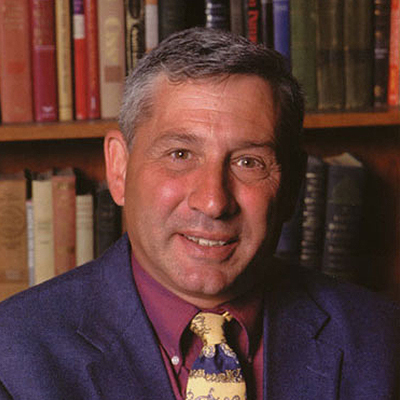Gary E. Belovsky Professor Emeritus

Research Interests:
My students and I have been conducting long-term studies in grasslands at the National Bison Range in Montana (since 1978) and at Great Salt Lake in Utah (since 1995). Newer projects are in Puerto Rican rainforest and in forests at the University of Notre Dame Environmental Research Center (Michigan).
My research philosophy has several major themes. First, I construct theories and test them by conducting observational and experimental field studies. Second, I apply a reductionist approach to understand higher level processes, e.g., can community ecology be understood by population processes and can population processes in turn be understood by behavioral/physiological processes. Finally, I attempt to employ my studies of ecological principles to address applied problems (e.g., conservation) and provide insights in other disciplines (e.g., anthropology/archeology).
I have particularly focused on foraging theory as it relates to population dynamics, interspecific competition, predator-prey dynamics and nutrient cycling in ecosystems. In these studies, herbivores as large as bison and moose and as small as grasshoppers and brine shrimp have been employed. In turn, predators as large as mountain lions and as small as birds and spiders are studied. With this diversity of herbivores and predators, ecological patterns related to body mass have been explored. Findings from these studies have been applied to examine population viability for conservation, pest control programs of herbivores that may be reducing nutrient cycling and thereby, plant production in ecosystems, and prehistoric human hunter-gatherers and how they influenced their environment.
Biography:
- Gillen Director, Environmental Research Center, and Professor, Department of Biological Sciences, University of Notre Dame, Notre Dame, IN 2001-Present
- Professor, Department of Fisheries and Wildlife, Utah State University, Logan, UT 1993-2001
- Associate Professor, Department of Fisheries & Wildlife, Utah State Univ., Logan, UT 1992-1993
- Associate Professor, School of Natural Resources and Department of Biology, University of Michigan, Ann Arbor, MI 1985-1991
- Research Associate, Department of Zoology, University of New South Wales, Australia 1988-1989
- Assistant Professor, School of Natural Resources, University of Michigan, Ann Arbor, M 1980-1985
- Research Associate, University of Washington, Seattle, WA 1978-1983
- Harvard Junior Fellow, Harvard Society of Fellows, Harvard University, Cambridge, MA 1976-1980
- Harvard University Zoology Ph.D. 1980
- Yale University, School of F&ES Ecology M.F.S. 1974
- University of Notre Dame Business, summa cum laude B.B.A. 1972
Recent Papers:
- Kistner, E.J., Saums, M., and G.E. Belovsky. 2015. Mechanical vectors enhance fungal entomopathogen reduction of the grasshopper pest Camnula pellucida (Orthoptera: Acrididae). Environmental Entomology 1-9: DOI:10.1093/ee/nvu004.
- Kistner, E.J. and G.E. Belovsky. 2014. Host dynamics determine responses to disease: additive versus compensatory mortality in a grasshopper-pathogen system. Ecology 95: 2579-2588.
- Perschon, Clay, G.E. Belovsky, David Naftz, Robert Baskin, John Luft, Chad Larson, Chad Mellison, Heidi Mahon, James Van Leeuwen, Paul Birdsey, Don Paul, and Ryan Mosley. 2014. The Great Salt Lake Ecosystem (Utah, USA): long term data and a structural equation approach: Reply. Ecosphere 5:art37. http://dx.doi.org/10.1890/ES13-00406.1
- Larson, C.A. and G.E. Belovsky. 2013. Salinity and nutrients influence species richness and evenness of phytoplankton communities in microcosm experiments from Great Salt Lake, Utah, USA. Journal of Plankton Research 35(5): 1154-1166. First published online June 4, 2013 doi:10.1093/plankt/fbt053
- Kistner, E.J., and G.E. Belovsky. 2013. Susceptibility to Disease Across Developmental Stages: Examining the Effects of an Entomopathogen on a Grasshopper (Orthoptera: Acrididae) Pest. Journal of Orthoptera Research 22(2):73-77. doi: http://dx.doi.org/10.1665/034.022.0206.
- Crowl, T.A., N. Brokaw, R.B. Waide, G. Gonzalez, K. Beard, E. Greathouse, A.E. Lugo, A.P. Covich, D.J. Lodge, C. Pringle, J. Thompson, and G.E. Belovsky. 2012. When and where biota matter: Linking disturbance regimes, species characteristics and dynamics of communities and ecosystems. 44 pages. In: N. Brokaw, T. Crowl, A. Lugo, W. McDowell, F. Scatena, R. Waide, and M. Willig (eds.), A Caribbean Forest Tapestry: The Multidimensional Nature of Disturbance and Response. Oxford University Press.
- G.E. Belovsky, D. Stephens, C. Perschon, P. Birdsey, D. Paul, D. Naftz, R. Baskin, C. Larson, C. Mellison, J. Luft, R. Mosley, H. Mahon, J. Van Leeuwen, and D.V. Allen. 2011. The Great Salt Lake Ecosystem (Utah, USA): long term data and a structural equation approach. Ecosphere 2(3):art33. doi:10.1890/ES10-00091.1.
- Gary E. Belovsky, Doyle Stephens, Clay Perschon, Paul Birdsey, Don Paul, David Naftz, Robert Baskin, Chad Larson, Chad Mellison, John Luft, Ryan Mosley, Heidi Mahon, James Van Leeuwen, and David V. Allen. 2011. The Great Salt Lake Ecosystem (Utah, USA): long term data and a structural equation approach. Ecosphere 2:art33. Supplement: Monthly data for the 13 years of our study is summarized in the Results section of the main text. Ecological Archives C002-005-S1.
- G.E. Belovsky, A.N. Laws, and J. B. Slade. 2011. Prey change behaviour with predation threat, but demographic effects vary with prey density: experiments with grasshoppers and birds. Ecology Letters 14(4): 335-440. http://onlinelibrary.wiley.com/doi/10.1111/j.1461-0248.2011.01591.x/pdf
- G.E. Belovsky and J. B. Slade. 2010. Observations on non-additive predation: birds and grasshoppers. Evolutionary Ecology Research 12: 739-749.
- Laws, A.N., and G.E. Belovsky. 2010. How will species respond to climate change? Examining the effects of temperature and population density on an herbivorous insect. Environmental Entomology 39(2):312-319.
- Belovsky, G.E. 2009. An Optimal Foraging-Based Model of Hunter-Gatherer Population Dynamics. Pages 85-103. In: J.M. Broughton and M.C. Cannon (eds.), Evolutionary Ecology and Archaeology: Applications to Problems in Human Evolution and Prehistory. University of Utah Press, Salt Lake City, UT.
- Crowl, T.A., T.O. Crist, R.R. Parmenter, G.E. Belovsky, and A.E. Lugo. 2008. The spread of invasive species and infectious disease as drivers of ecosystem change in an increasingly connected world. Frontiers in Ecology and the Environment 6(5):238-246.